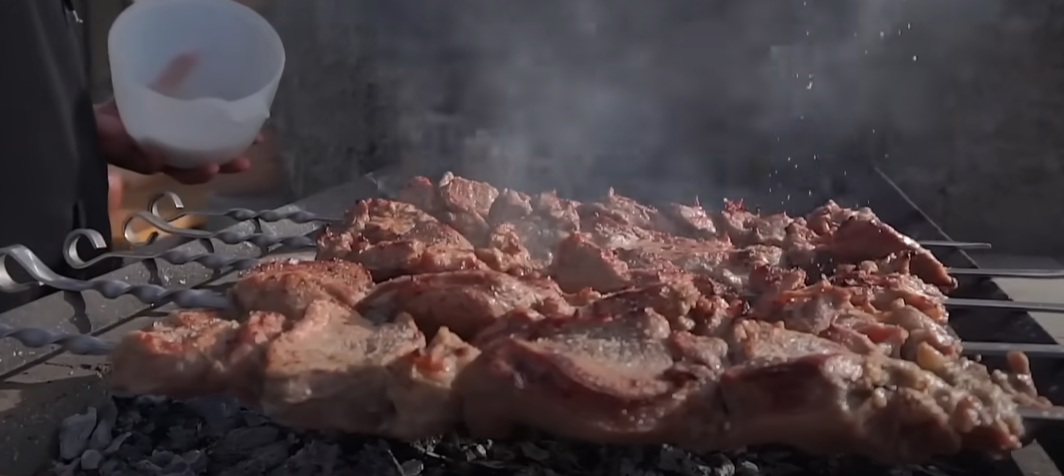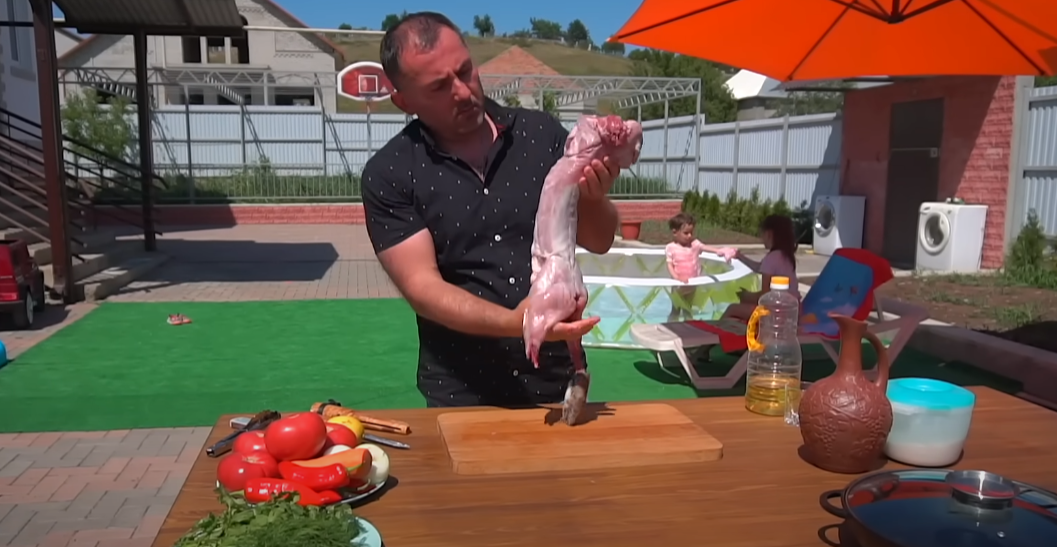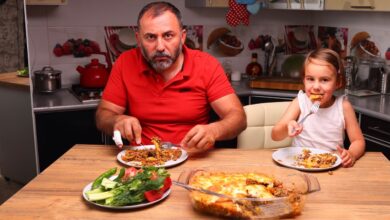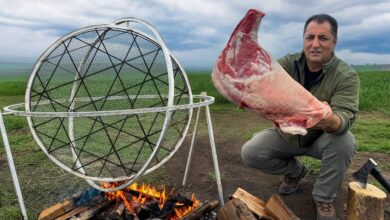ROASTED MEAT IN AN OVEN – KAVKAZ

1. Introduction: A Universal Love for Roasted Meat
There’s something timeless about roasted meat—a crackling exterior, tender interior, savory aromas that seduce your senses. Whether for a festive gathering, a Sunday family dinner, or a simple craving, oven-roasted meat delivers satisfaction and warmth.

2. Selecting the Perfect Cut
2.1 Popular Cuts for Roasting
- Beef Rib Roast / Prime Rib: Rich in marbling, ideal for juicy, flavorful results.
- Leg of Lamb: A festive favorite with distinctive taste.
- Pork Loin or Shoulder: Great balance of fat and tenderness.
- Chicken Whole or Spatchcocked: Quick roasting, deliciously caramelized skin.
2.2 Quality Matters
Opt for well-marbled, evenly chilled cuts. Marbling ensures flavor and moistness. Avoid dry-looking or thin cuts that can overcook easily.
3. Preparing the Meat
3.1 Thawing and Patting Dry
- Thaw thoroughly in the fridge over 24 hours for even cooking.
- Pat the meat completely dry—moisture hinders effective browning.
3.2 Season Generously
- A simple salt-and-pepper rub suffices, but:
- Herb rubs: Rosemary, thyme, sage complement lamb and beef.
- Spice blends: Smoked paprika, garlic powder, onion powder.
- Marinades: Olive oil, lemon juice, garlic mixtures, or soy-based for umami punch.
3.3 Bring to Room Temperature
Leave meat out 30–60 minutes pre-roast to ensure even cooking throughout.

4. Preheating and Setup
4.1 Oven Temperature Strategy
- High-heat sear: Start at 230 °C (450 °F) for 10–15 minutes to form a crust.
- Lower roast: Reduce to 175–180 °C (350–360 °F).
4.2 Pan and Rack Choice
- Use a shallow roasting pan with a rack—lift meat to allow air circulation.
- Add aromatics in the pan: halved onions, smashed garlic, carrot, celery, herbs.
4.3 Using Thermometers
- Insert a probe thermometer in the thickest part, avoiding bone or fat, for accurate internal temp readings.
5. Roasting Phases
5.1 Sear Phase
- Sear at high heat for 10–15 minutes. This locks in juices and creates the crust.
5.2 Even Roast & Monitoring
- Drop to 175–180 °C.
- Roast about 20 minutes per 500 g (1 lb) for medium-rare doneness.
5.3 Target Internal Temperatures
- Beef/Lamb: Medium-rare 55–60 °C (130–140 °F), medium 60–65 °C (140–150 °F).
- Pork: Safe to cook to 63–68 °C (145–155 °F).
- Chicken: 74 °C (165 °F) in thickest part.
6. Resting: The Crucial Step
After oven time, transfer the meat to a cutting board. Tent loosely with foil for 15–20 minutes. Resting:
- Allows residual heat to finish cooking.
- Lets juices redistribute—cutting too soon loses them on the board.
7. Crafting Sauces and Gravies
7.1 Pan Juices as Base
- Pour off fat, leaving browned bits.
- Deglaze with wine, stock, or water.
- Scrape up fond, reduce, and swirl in butter or cream.
7.2 Classic Accompaniments
- Red wine or rosemary jus for lamb and beef.
- Apple cider or mustard gravy for pork.
- Chicken gravy with cream and thyme.
8. Presentation & Serving Suggestions
8.1 Artful Slicing
- Slice against the grain in fairly thick slabs.
- For whole chicken, carve the breasts, legs, and thighs neatly.
8.2 Plating Style
- Lay atop a bed of roasted root vegetables.
- Garnish with fresh herbs and citrus zest for color and brightness.
8.3 Side Pairings
- Beef/Lamb: roasted potatoes, sautéed greens, horseradish cream.
- Pork: applesauce, cabbage slaw, roasted sweet potatoes.
- Chicken: seasoned rice, steamed veg, mashed potato.
9. Flavor Variations & Global Twists
Let your kitchen travel without leaving home:
- Mediterranean Lamb: Garlic, oregano, lemon zest.
- Herb-Crusted Beef: Dijon mustard base, parsley and thyme crust.
- Spiced Pork: Smoked paprika, cumin, coriander rub.
- Asian Chicken: Soy, ginger, honey, sesame seeds glaze.
10. Troubleshooting Guide
| Problem | Cause | Fix |
|---|---|---|
| Burnt exterior | Too high heat or too long sear | Lower heat or reduce sear time |
| Dry interior | Overcooked, insufficient resting | Use thermometer; rest meat longer |
| Pale crust | Meat was wet, no high initial heat | Dry it well, raise oven temp |
| Tough or chewy meat | Not suited cut, too lean/mis cooked | Choose right cut; cook time/temp per guidelines |
11. Health, Food Safety & Nutrition
- Always wash hands/surfaces after handling raw meat.
- Use different cutting boards for raw vs. cooked to avoid cross-contamination.
- Store leftovers within two hours; refrigerate promptly.
- Use cooked meat within 3–4 days; freeze for longer storage.
12. Science Behind It All
- Maillard Reaction: Protein-sugar bonds at high heat form the savory crust.
- Collagen breakdown: Slow cooking dissolves tough fibers into gelatin.
- Resting: Internal carryover cooking boosts temp post-oven.
- Thermometer importance: Key to consistency and avoiding dry meat.
13. Video Highlights and Expert Insights
The YouTube tutorial walks you through the process:
- Drying, searing, roasting, resting, sauce-making .
- Focus on simple, minimal ingredients to showcase meat naturality.
- The host emphasizes texture, aroma, and the discipline of technique.
14. Chef Tips That Elevate
- Salt early—up to 24 hours before—helps flavor penetrate deeper.
- Use a digital probe thermometer with alert for precision.
- Mist meat during roasting (with stock/wine) to prevent drying.
- Turn aromatic veggies halfway to enhance pan sauce flavors.
15. Bringing It to Your Table
Encourage readers to reinvent:
- Try herb mixes, smoke chips in oven (if possible), or citrus zest additions.
- Experiment with roasting different proteins (duck, venison).
- Make it a centerpiece dish with warm bread, fresh salad, and wine pairing.
16. Conclusion & Invitation
Oven-roasted meat remains a beloved culinary keystone—rich, satisfying, communal. This comprehensive guide, inspired by the YouTube video, blends art, science, tradition, and personal creativity to help you roast like a pro.
Whether you’re a seasoned cook or a weekend foodie, use this as your roadmap to roast perfection. Feel the pride when your oven opens to reveal a golden, savory masterpiece that speaks of tradition, technique, and love.





